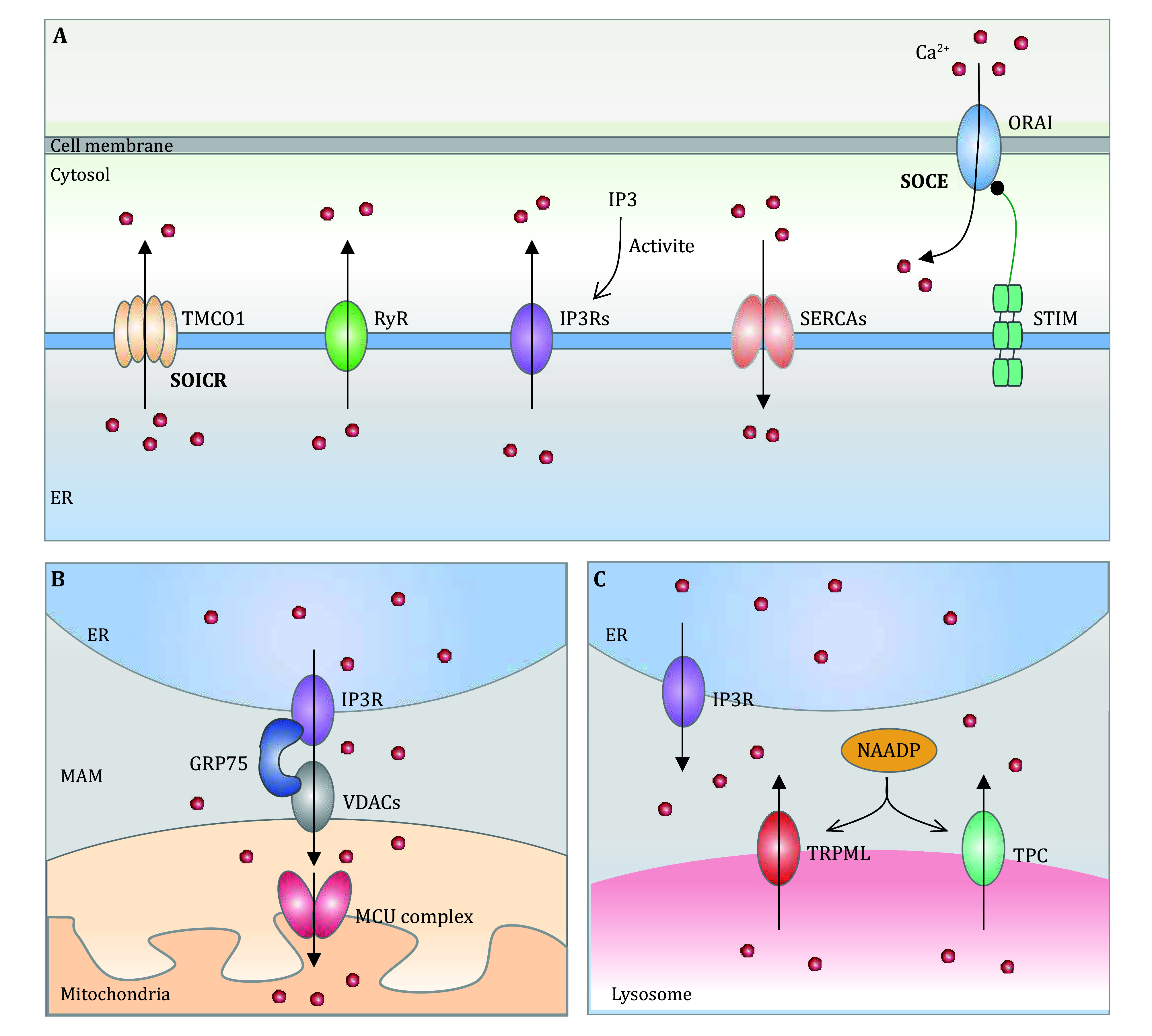Figure 1.

A graphical representation of calcium homeostasis attainment. A ER-Cytosol-Plasma membrane communications. ER-resident calcium pump proteins SERCAs are responsible for transporting Ca2+ from the cytosolic into the ER. IP3Rs, or RyRs mediate the release of calcium from the ER in response to the increased IP3 following hormone or growth factor stimulation, or increased cytosolic Ca2+ levels. When ER Ca2+ concentration is reduced, STIM can be activated to interact with and activate plasma membrane-localized Ca2+ channel ORAI1, leading to extracellular Ca2+ being influx and the subsequent SERCA-mediated ER Ca2+ refilling. Nevertheless, during ER Ca2+ overload, the TMCO1 can be stimulated to release Ca2+ into the cytosol by forming a selective Ca2+ channel through monomer-to-tetramer transformation, a process termed SOICR. B ER-Mitochondria communications. The ER and mitochondria are interconnected both structurally and functionally through a specialized microdomain known as the MAM. Within MAMs, several proteins such as Grp-75, VDAC1, and IP3R play a crucial role in regulating Ca2+ release from the ER and an efficient mitochondrial Ca2+ uptake. C ER–lysosome communications. Lysosomal Ca2+ depletion initiates the IP3R-mediated Ca2+ release from ER and subsequent lysosome Ca2+ refilling through the Ca2+ transporter or Ca2+/H+ exchanger (CAX). Furthermore, ER can restore Ca2+ from the lysosomes through the stimulation of two distinct mechanisms: the activation of TPC by NAADP, or the activation of TRPML1
